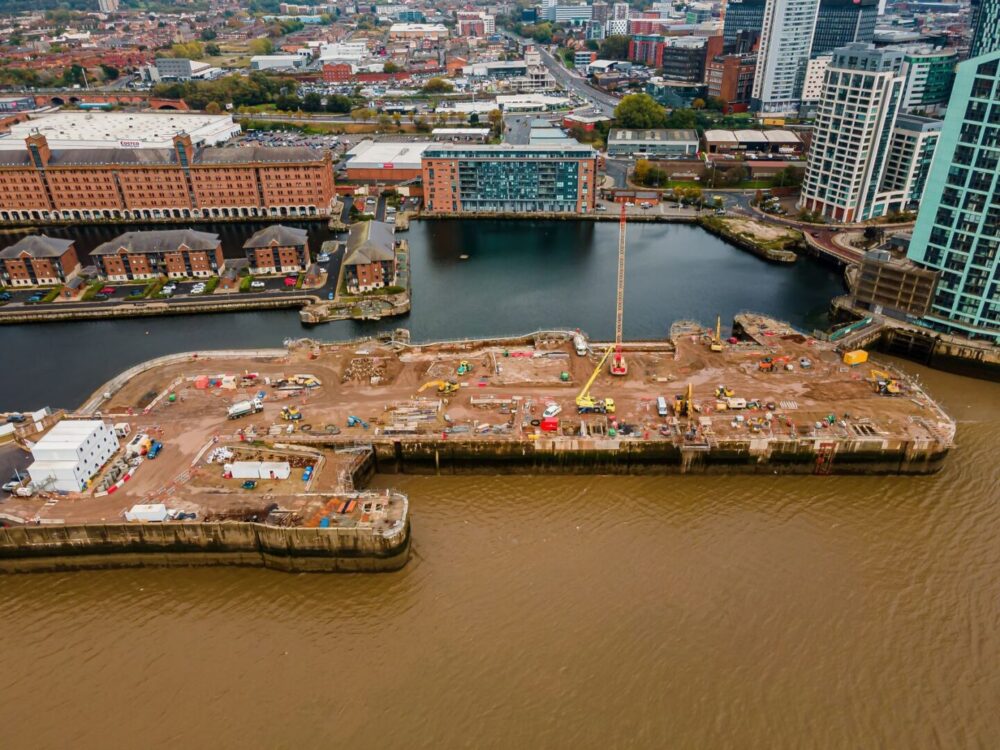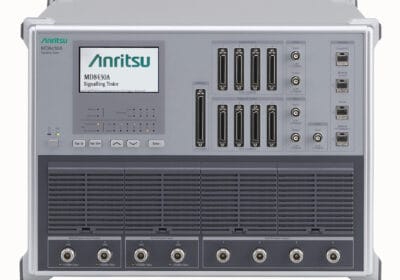~ When hydraulic monitoring meets wireless telemetry ~
Construction projects near rivers are challenging because excavation can destabilise riverbanks and excessive vibrations from machinery can threaten the integrity of existing structures. Contractors need a way of measuring the forces on a structure to prevent the foundations from cracking. Here Tom Lilly, application engineer at wireless remote monitoring specialist Mantracourt, describes how it partnered with test and measurement equipment distributor Hydrotechnik to create a pressure monitoring system for hydraulic rams to support a building’s foundations against forces from the River Thames.
The Thames is vulnerable to tidal surges generated in the Atlantic, which are funnelled into the English Channel and up the Thames Estuary. When surges coincide with high tides, Thames’ water levels can rise by more than two metres putting extra pressure on the foundations of riverbank buildings. To safely renovate a new shopping centre near the Thames, Hydrotechnik needed a system that could wirelessly monitor and log pressures in a hydraulic ram’s cylinders.
The challenge was that the hydraulic rams were already installed in the building’s foundations for support and hydraulic pressures were always increasing at high tides, applying more force to the structure’s walls. Teams of specialists would have to manually screw pressure gauges onto the hydraulic ports just to take pressure readings. Often, these ports are found in hard-to-reach underwater areas, so manual testing wasn’t practical, safe or cost-effective. It also couldn’t be carried out frequently enough to spot any threats to the structural integrity.
Challenging environmental factors
Hydrotechnik formulated a plan to integrate wireless telemetry transmitters onto the pressure sensors on the hydraulic rams, so that pressure readings could be taken in real-time, 24/7. The data would be transmitted to a base station and monitored using a PC-based data logging software.
Installing this technology has its challenges. On-site, there are variable weather conditions, moving vehicles and bulky building materials that could block the transmission of wireless data. In some cases, whole new buildings will be erected, which will make it difficult for signals to penetrate. Therefore, the devices needed to transmit data over a large area, be weather-resistant and durable to withstand vibrations made by heavy machinery.
To solve this problem, Hydrotechnik sought help from Mantracourt. The two businesses worked together to marry up hydraulic monitoring with wireless telemetry electronic devices. The instrumentation sold for the Thames project was packaged under Hydrotechnik’s Watchlog Wireless branding.
The Watchlog system comprises ten bridge-based pressure sensors, each bolted to a standard IP67-rated T24 transmitter enclosure. Signals from these sensors are wirelessly transmitted up to 800 metres to an optional solar powered wireless range extender. This then sends the data to the base station installed in the construction site’s main office.
Solving the limited power supply problem
Another design challenge was the limited power supply onsite. The transmitters themselves have very good battery life and only need changing periodically because data transmission is efficient. However, receivers, such as active repeaters, need to be on all the time, giving a significantly shorter battery life.
Installing electrical power cables across a building site isn’t a practical option for most contractors. Firstly, it is costly and complex to install underground wiring for a temporary building site. Secondly, overground electrical cables pose a safety risk to construction workers. Mantracourt was able to pair the devices with a weatherproof SP1 solar panel and a PP1 power pack.
The combination of the solar panel and power pack provides contractors with dependable off-grid power generation 24/7 and round-the-clock remote data collection. The 12 V system can provide an average of 53 mA of power, even during the winter months, which is more than enough to power an active repeater. The battery pack is also sealed in a weatherproof IP65-rated casing with rugged waterproof connectors for attaching the solar panel.
Mantracourt’s T24 wireless telemetry system can connect to SensorSpace — a cloud-based platform used by Hydrotechnik customers, allowing them to remotely monitor a live feed of data and a historical three-year data repository.
The pressure data collected could be viewed and analysed for predictive maintenance, anomaly detection and general diagnostics. For example, data from linear movement and vibration sensors can be viewed online using the same customisable dashboard as hydraulic pressure. If a problem is detected, the site manager can be notified via SMS or email.
To learn more about Mantracourt’s T24 wireless telemetry system or the SensorSpace cloud-based platform, visit the Mantracourt website at www.mantracourt.com.








